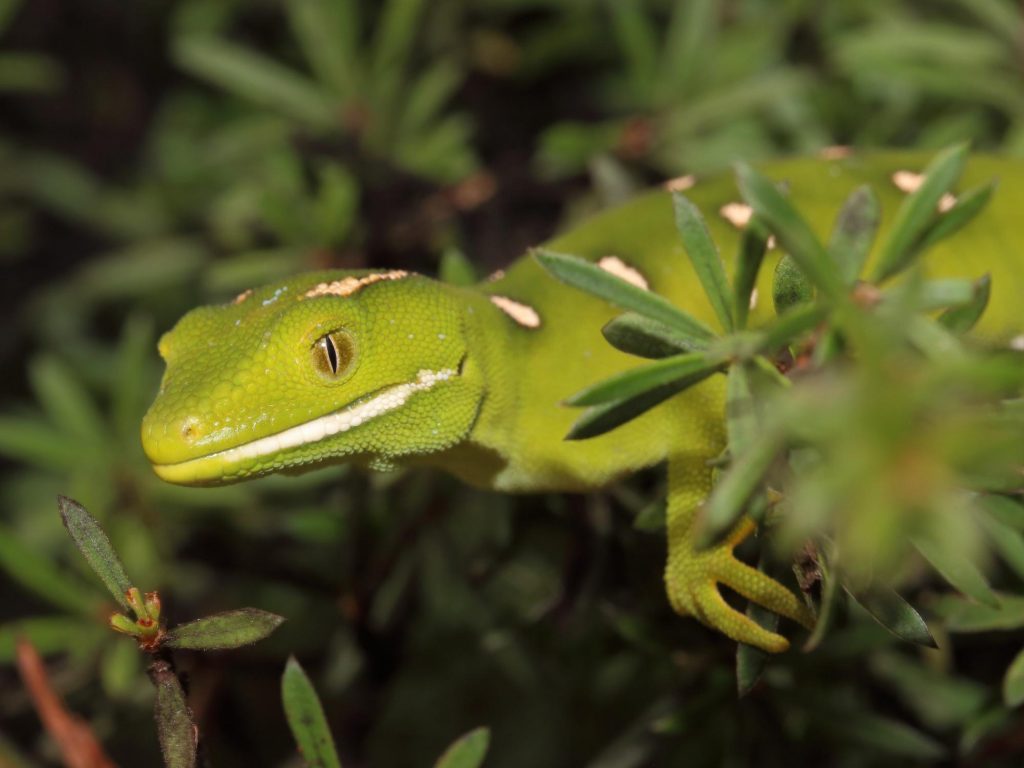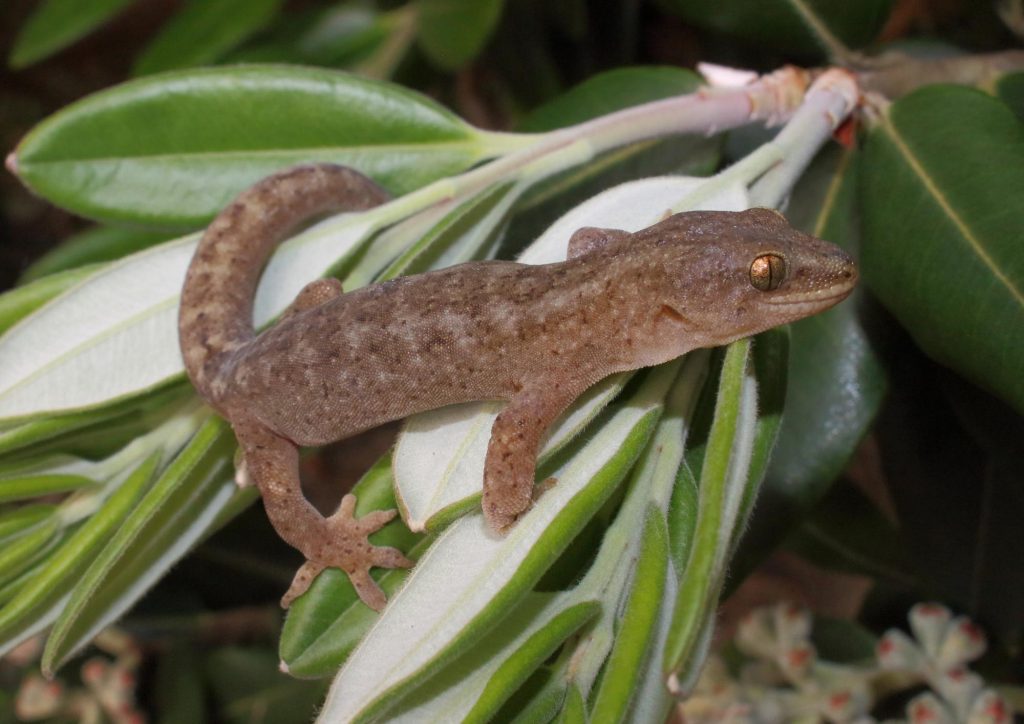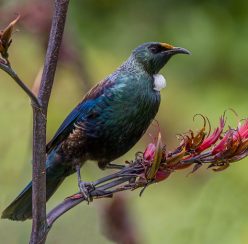I’ve always loved New Zealand geckos; with their loose, velvety skin and big friendly eyes, they are charming, almost whimsical creatures.
There are 48 known species, but new species were discovered even in the last year. With seven distinct genus groups, they are incredibly varied and long-lived, with some species exceeding 50 years of age in captivity. Due to introduced predators and loss of habitat, many are seriously endangered and live only on offshore islands.
Although there was a reported sighting of what could only be the Elegant Gecko a while ago, no species are officially resident on Rakino. This is a blog about the species present in the Hauraki Gulf, the ones that we could get to see on Rakino Island someday. They are democratically spread across five genus groups with one species each…
The Elegant gecko (Naultinus elegans)

This is the iconic one we all think of; bright verdant green (or yellow) with white diamonds. As if that isn’t enough, the Elegant has a blue mouth, black tongue, and can lick its own eyeballs.
https://www.reptiles.org.nz/herpetofauna/native/naultinus-elegans
The Forest gecko (Mokopirirakau granulatus)

https://www.reptiles.org.nz/herpetofauna/native/mokopirirakau-granulatus
Raukawa Gecko (Woodworthia maculata)

https://www.reptiles.org.nz/herpetofauna/native/woodworthia-maculata
Pacific gecko (Dactylocnemis pacificus)

https://www.reptiles.org.nz/herpetofauna/native/dactylocnemis-pacificus
Duvaucel’s Gecko (Hoplodactylus duvaucelii)
All the geckos are beautiful and fascinating, but the Duvey is almost unfairly endowed with endearing attributes; this, the largest New Zealand lizard is possessed of mesmerizing golden eyes and a beguiling yet self-deprecating grin, can live for more than 50 years and, although nocturnal, hangs out in social groups to bask in the sun. Behold the Duvaucel.

https://www.reptiles.org.nz/herpetofauna/native/hoplodactylus-duvaucelii
Many Thanks to Nick Harker for the Gecko photos all are copyright Nick Harker

